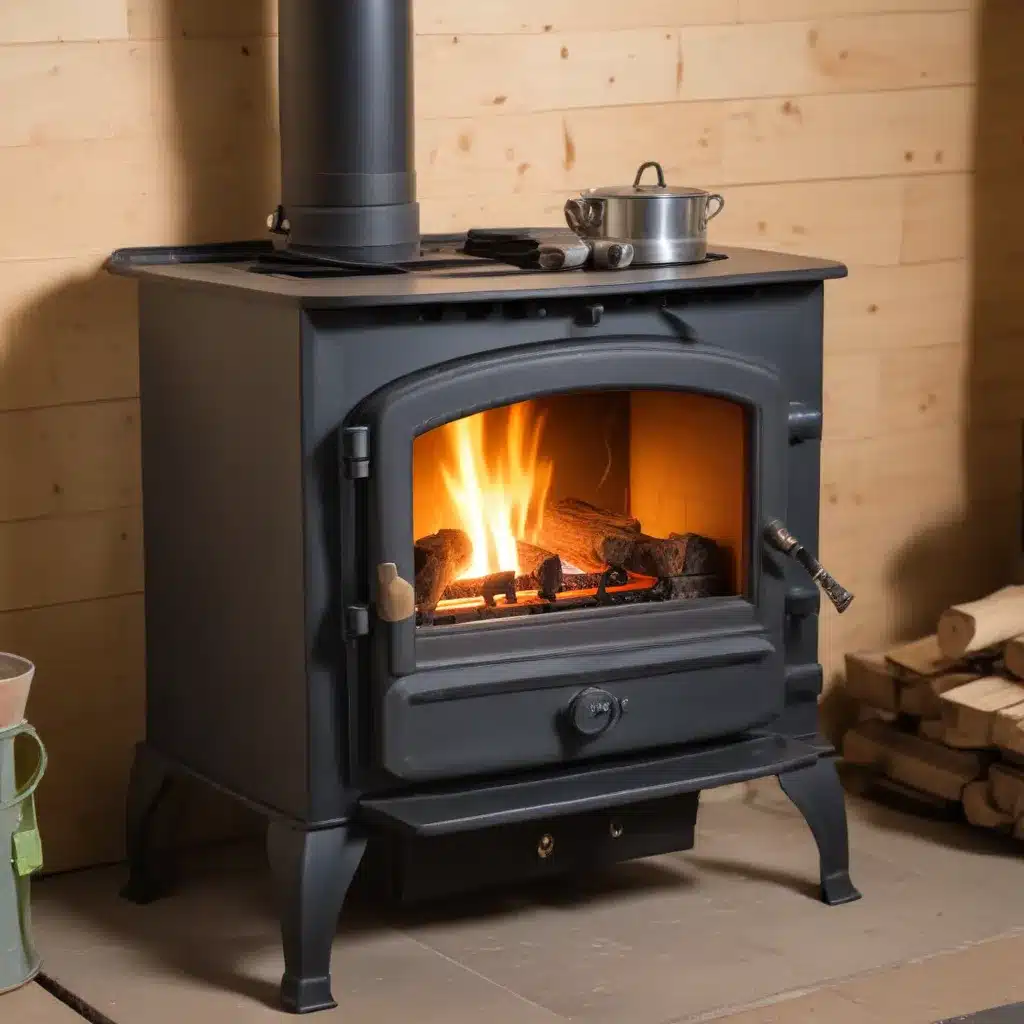
Understanding Wood Stove Fuel Types and Characteristics
As a seasoned expert in wood stoves and heating solutions, I’ve learned that mastering the art of fuel loading is essential for achieving maximum heat output from your wood stove. The type of wood you use, as well as how you load it, can have a significant impact on the performance and efficiency of your wood stove.
Let’s start by exploring the two main categories of firewood: hardwoods and softwoods. Hardwoods, such as oak, maple, and hickory, are dense and burn slower, producing long-lasting, hot coals. Softwoods, like pine, spruce, and cedar, are less dense and ignite more rapidly, burning with a quick, intense flame.
The key difference between these two wood types is their density and burn characteristics. Hardwoods have a higher density, which means they contain more energy per pound. This translates to a longer, hotter burn that produces a bed of glowing coals. Softwoods, on the other hand, have a lower density and burn more quickly, generating a shorter-lived but hotter flame.
When it comes to heat output, both hardwoods and softwoods can produce the same amount of heat, pound for pound. The primary difference is that you’ll need about twice as much softwood to achieve the same heat output as hardwood.
Optimizing Fuel Loading for Different Heating Needs
The type of fire you want to achieve, and the heat output you need, should guide your choice of wood and fuel loading technique. Let’s explore some best practices for various heating scenarios:
Mild Weather Fires
For milder weather conditions, where you want a quick, hot fire that won’t overheat your home, focus on using small to medium-sized softwood pieces. Load the wood loosely in the stove, allowing for plenty of air flow. This will create a “flash fire” that burns quickly and efficiently without producing lingering heat.
Cold Weather Fires
When the temperatures drop, you’ll want a fire that provides sustained, long-lasting heat. In this case, a combination of hardwoods and softwoods is ideal. Start by using softwoods as kindling to quickly ignite the fire, then transition to larger, denser hardwood logs. Load the wood tightly in the stove to restrict air flow and maintain a bed of hot coals that will continue to radiate heat.
Maximizing Heat Output
For the most intense, long-lasting heat, choose large hardwood logs and load them tightly in the stove. The dense, slow-burning nature of hardwoods will create a robust bed of coals that can provide hours of consistent heat output. This is particularly beneficial during the coldest winter days when you need to keep your home cozy and comfortable.
Regardless of the weather conditions or your heating needs, it’s important to ensure that your firewood is properly seasoned. Seasoned wood has a lower moisture content, which allows for more efficient combustion and higher heat output. Typically, hardwoods require 6 months to a year of seasoning, while softwoods may only need 3 to 6 months.
Mastering the Art of Fuel Loading Techniques
Now that we’ve explored the different wood types and their burn characteristics, let’s dive into the specific fuel loading techniques that can help you achieve maximum heat output from your wood stove.
The “Flash Fire” Technique
For a quick, hot fire that won’t overheat your home, use the “flash fire” technique. Start by building a small, loosely stacked pile of softwood kindling in the center of the stove. Light the kindling and allow it to fully ignite, creating a strong, initial flame. Then, add a few medium-sized softwood logs on top of the kindling, arranging them in a loose, open pattern to encourage airflow. This will result in a short-lived but intense fire that quickly heats your space without lingering.
The “Sustained Heat” Technique
When you need long-lasting, consistent heat, the “sustained heat” technique is the way to go. Begin by creating a base of softwood kindling to get the fire started. Once the kindling is fully lit, add a few large hardwood logs, arranging them in a tight, compact manner. This will restrict airflow and create a bed of hot coals that will continue to radiate heat for hours. As the fire burns down, you can periodically add more hardwood logs to maintain the heat output.
The “Maximum Heat” Technique
For the most intense, long-lasting heat output, use the “maximum heat” technique. Start with a base of softwood kindling to quickly ignite the fire. Then, add several large hardwood logs, stacking them tightly together with minimal air gaps. This compact arrangement will limit oxygen flow, resulting in a slower, hotter burn that produces a robust bed of glowing coals. You can occasionally add more hardwood logs as needed to maintain the heat.
Remember, the key to mastering these fuel loading techniques is experimentation and observation. Pay attention to how your wood stove responds to different fuel arrangements and adjust your approach accordingly. With practice, you’ll develop a keen understanding of how to optimize your wood stove’s performance for maximum heat output and efficiency.
Maintaining a Safe and Efficient Wood Stove
Alongside mastering fuel loading techniques, it’s crucial to ensure that your wood stove and chimney are properly maintained for safe and efficient operation. Regular chimney cleaning and inspection can help prevent dangerous creosote buildup, which can lead to chimney fires. Additionally, make sure your wood stove is installed correctly and adheres to all local safety codes and regulations.
By combining your expertise in fuel loading with proper wood stove and chimney maintenance, you’ll be well on your way to maximizing the heat output and efficiency of your wood-burning heating system. For more information on wood stove maintenance and heating solutions, be sure to visit https://woodstoveheaters.com/.


